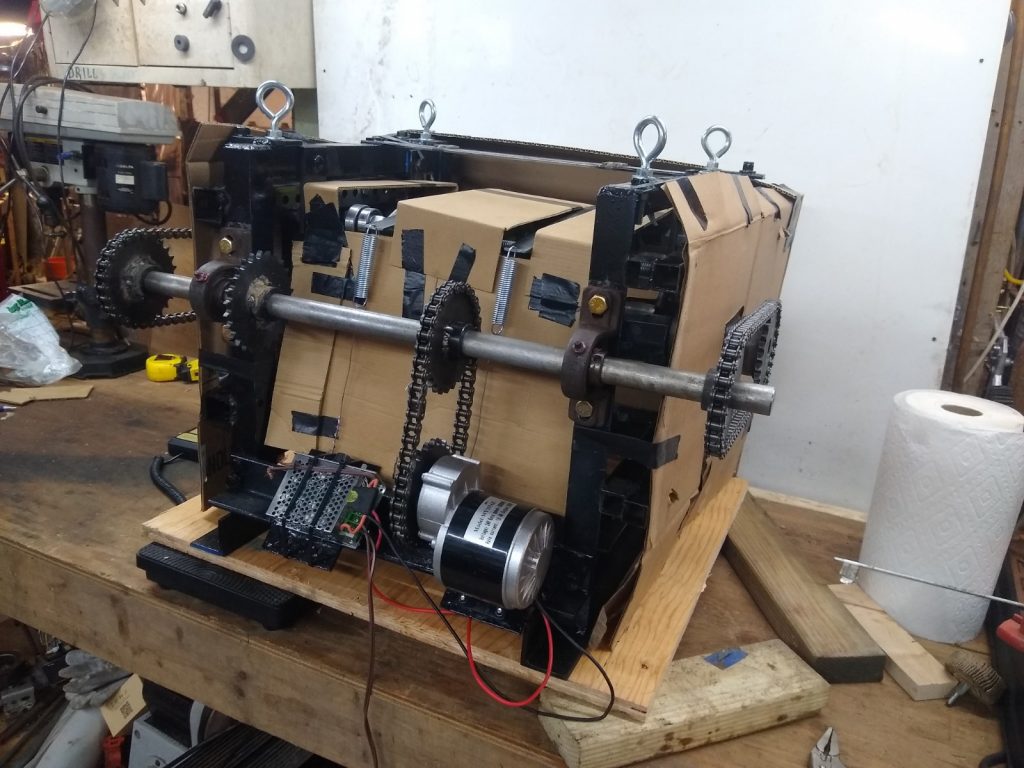November was a very busy month for Stclairtech R&D, and for the PIE X project!

So much has been accomplished with the PIE X project it is mind boggling!!! The “backfire” issue has been resolved and there have been some very successful tests completed running with the electric motor.
Some of the highlights are:
The “backfire” problem is now well controlled with a minor design workaround. Future builds will take these backfire control requirements into account so that “workarounds” will be unnecessary.
The PIE X has earned itself a name of its own and is now known as the “Trammel Engine”. It is a name which is both literal and figurative. Literal because it has internals which resemble the operation of an ellipsograph, or “Trammel of Archimedes”, and is a figurative tongue-in-cheek reference to the same machine’s moniker of being a “do-nothing machine” since its purpose seemed nonsensical for the most part.
The Trammel Engine (T-Engine or TE for short) is now running well enough to perform some rudimentary testing which has demonstrated true linear thrust. It has been measured thrusting upward with a weight scale with an averaged thrust of .7 lbs. and peaks ten-times that amount running at input speeds of no more than 350 RPM.
Unlike the earlier PIE systems based on Thornson technology the T-Engine does not seem to have a low-speed limitation, and it is creating more thrust as RPMs increase.
A few shareable facts (so far):
1- The TE has externally driven mechanical components which are driven via the electric motor(s) and cause overall rotation along with internal rotating components.
2- There are 3 major rotating component assemblies consisting of metal parts using ball-bearings for friction reduction.
3- Some of the pieces of the internal assemblies can be labeled with names resembling those of internal combustion engines. Pistons, connecting rods, camshaft-like parts, and flywheels are just some of those named components.
Overly simplistically stated, it uses something very similar in function to a lever pulling a load which is allowed to move past apex and “snap over center”. This over center, snapping, rotating assembly is moving masses, accelerating, decelerating, and recovering them 4 times per disc rotation.
The internal timing of these components, and the use of a “camshaft-like” sub-assembly is of utmost importance to eliminating the backfire issue!
There are several videos available on YouTube and BitChute, the latest of them (at this writing) is a 2-part set called “Trammel Engine Works Part 1” and “…Part 2”. Part one shows the test rig, and part two shows a “successful” test which ended abruptly when the fuse blew. It turned out that the fuse blew because one of the “connecting rods” broke. Here are those videos below.
The broken and damaged parts are now being replaced and repaired, there will be more tests to come very soon! And hopefully more can be revealed soon…